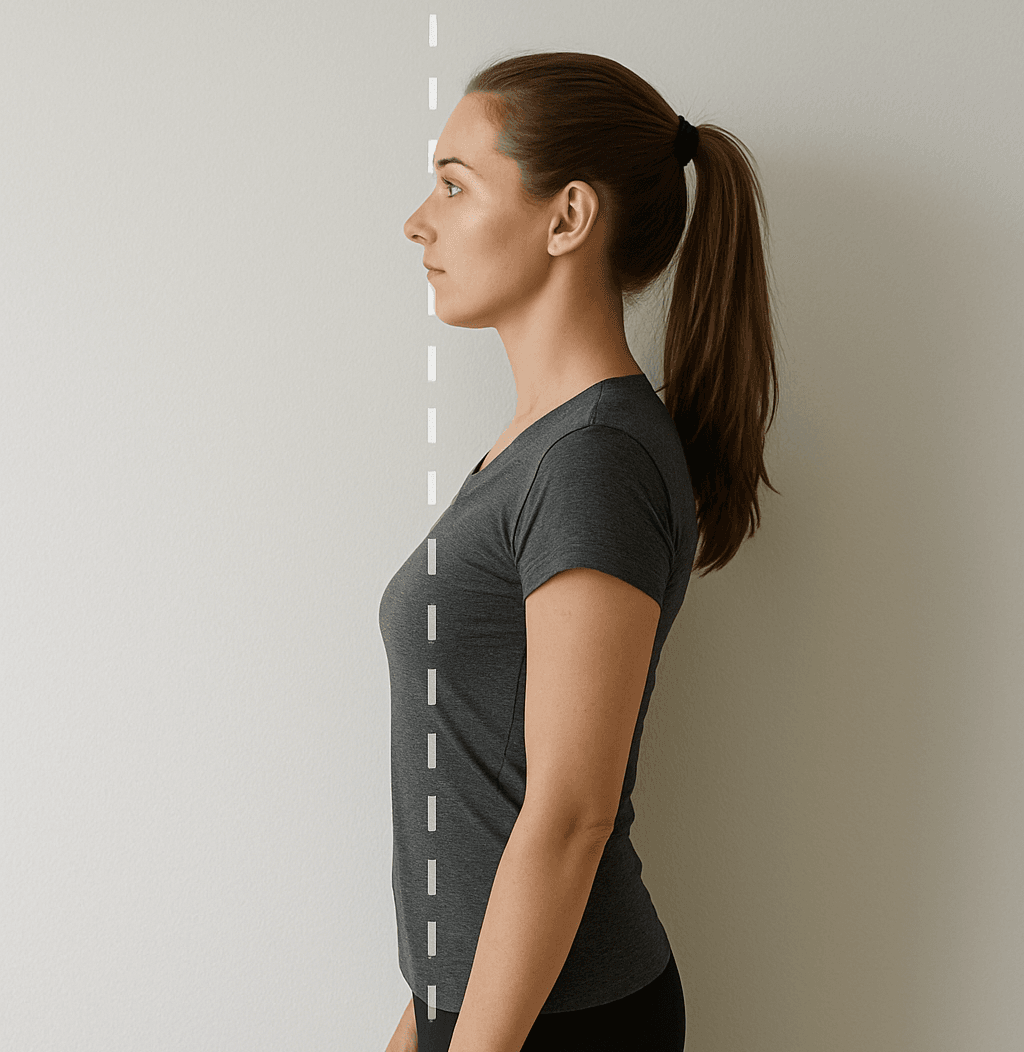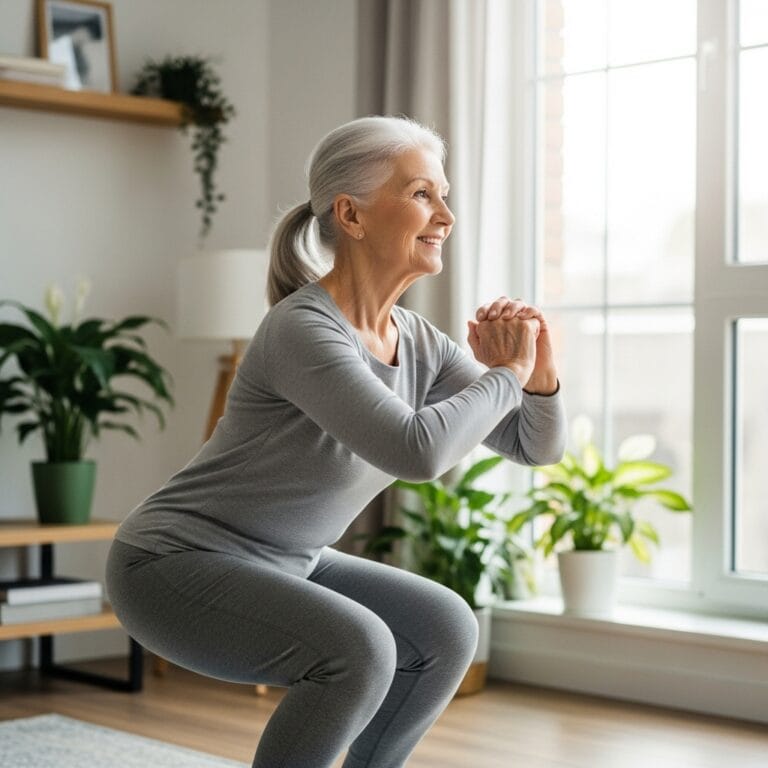FREE SHIPPING OVER $50
This 3-Second Posture Test Revealed the Back Problem I Didn’t Know I Had

For years, I believed I had decent posture. Sure, I had the occasional backache after a long day at the desk, but I chalked it up to normal life. I stretched, I worked out, and I tried to remember to “sit up straight.” But the nagging tension in my shoulders and the persistent neck pain just wouldn’t quit. It wasn’t until I learned about a simple, surprisingly effective 3-second posture test that I realized the root of my discomfort wasn’t a minor issue—it was a deep, hidden structural imbalance that was silently accelerating wear and tear on my spine.
This quick assessment, often used by chiropractors and fitness professionals, instantly exposed a condition known as Upper Crossed Syndrome and its notorious sidekick, forward head posture. The good news is that once I understood the nature of the problem—the specific muscle weaknesses and tightness causing the issue—the solutions became clear and actionable. If you suffer from chronic neck pain, tension headaches, or general upper back soreness, this test is the wake-up call you need, and the simple fixes can start your journey toward true spinal health today.
The 3-Second Posture Test: The Simple Wall Check
The test is straightforward and requires only a wall. Its speed makes it brutally honest, as you don’t have time to consciously correct your typical resting posture.
How to Perform the Test
- Stand Against a Wall: Place your heels about 2 to 4 inches away from the wall.
- Make Contact: Try to place your hips, upper back (shoulder blade area), and the back of your head flat against the wall.
- The Reveal (3 Seconds): Note which body part doesn’t easily touch the wall. Most people find that their head or the upper part of their back struggles to make contact without forcing the chin down or arching the lower back excessively.
What the Test Exposed
For me, the test immediately showed that my head was floating a solid inch or more in front of the wall. This indicated a classic case of forward head posture. Every inch your head shifts forward, it adds about 10 pounds of pressure to your spine and supporting muscles. Over time, this constant strain is the real reason for chronic tension and the visible neck hump many people develop.
The Hidden Problem: Unpacking Upper Crossed Syndrome
The forward head posture exposed by the wall test is merely the visible symptom of a deeper problem: Upper Crossed Syndrome (UCS). This is a predictable pattern of muscle imbalance caused by long hours of sitting, driving, and phone use.
The Imbalance: Tight vs. Weak
UCS is defined by two opposing sets of muscles:
- Tight Muscles (The Overworkers):
- Pectorals (Chest): Chronic slouching shortens these muscles, constantly pulling the shoulders forward and rounding the upper back.
- Upper Trapezius and Levator Scapulae (Upper Neck): These muscles are permanently tense from trying to hold up the heavy, forward-shifted head. This causes persistent neck pain and tension headaches.
- Weak Muscles (The Sleepers):
- Deep Neck Flexors: These small, essential muscles at the front of the neck are meant to gently draw the head back over the spine. They become weak from disuse.
- Rhomboids and Mid-Back Stabilizers: These muscles are designed to pull the shoulder blades down and back. They are often dormant, failing to counteract the tight chest.
The goal of true posture correction is not just to “sit straight” for a moment; it is to strengthen the weak muscles and stretch the tight ones until the correct posture becomes your body’s natural, effortless resting state.
The Fixes: A Targeted 3-Step Action Plan
Based on the diagnosis of Upper Crossed Syndrome, fitness and health experts recommend a focused routine that addresses both the tightness and the weakness.
Fix 1: Activate the Deep Neck Flexors (The Chin Tuck)
This exercise directly combats forward head posture by awakening the deep muscles needed to retract your head.
- Action: Sit or stand tall. Gently draw your chin straight back, as if you are trying to make a double chin. You should feel tension at the back of your neck, and your head should feel like it is sliding straight back over the spine. Do not tilt your head down.
- Why it Works: This is the antidote to looking at your phone all day. It builds muscle memory in the crucial, weak muscles that define good neck posture.
- Daily Dose: Perform 10 repetitions, holding for 5 seconds, 3 to 4 times a day. This is your most important corrective move.
Fix 2: Stretch the Pectorals (The Doorway Chest Opener)
You must lengthen the tight front muscles to allow your shoulders to naturally pull back into alignment.
- Action: Stand in a doorway. Place your forearms on the frame with your elbows bent slightly below shoulder height. Step one foot forward slowly until you feel a comfortable, deep stretch across your chest. Keep your hips facing forward.
- Why it Works: This stretch manually counteracts the chronic shortening caused by desk work. When the chest relaxes, the upper back muscles have a chance to take over.
- Daily Dose: Hold the stretch for 45 to 60 seconds on each side. Do this twice a day. Long holds are necessary to create lasting change in the muscle length.
Fix 3: Strengthen the Mid-Back (The T and Y Raises)
These are simple moves that require light weights (or just your body weight) to rebuild the strength in the weak stabilizers.
- Action: Lie face down on the floor or on an incline bench. With light dumbbells or just your fists, lift your arms straight out to the sides in a “T” shape, squeezing your shoulder blades together. Then, lift your arms diagonally forward in a “Y” shape. Keep your neck relaxed and use your upper back muscles to drive the lift.
- Why it Works: This routine specifically targets the rhomboids and lower traps—the muscles that need to be strong to hold your shoulder blades down and back, effectively preventing the slouch and the resulting neck hump.
- Daily Dose: Perform 3 sets of 12 to 15 repetitions for both the T and Y shapes, 3 times per week. Focus on the squeeze at the top of the move.
Environmental Correction: Making Posture Effortless
You could do these exercises all day, but they will fail if you return to a hostile environment. Sustainable posture correction requires changing the factors that caused the problem.
The Monitor Rule
The angle of your computer screen is the most common cause of forward head posture. Your eyes naturally seek the center of the screen, and if it’s too low, your head tilts forward.
- The Fix: Raise your screen so the top third is at eye level. This forces your head to remain neutral and reduces the 10 pounds of extra stress on your neck muscles. Use a laptop stand or external monitor to achieve this height.
The Phone Rule
Constantly looking down at your phone accelerates the forward head posture.
- The Fix: Bring the phone up to your eye level as much as possible, or rest your elbows on a table to prop it up. Be mindful of the “text neck” position that rounds your spine and strains your neck.
The Sitting Rule
The goal is to maintain the neutral S-curve of the spine even when sitting.
- The Fix: Use a lumbar support or a rolled towel placed at the curve of your lower back. This prevents your pelvis from tucking under and forcing your upper back to round into the damaging “C” shape.
Final Thoughts
The power of the 3-second posture test is not just in its speed but in its ability to immediately reveal the hidden back problem that causes chronic neck pain and tension. By identifying Upper Crossed Syndrome and forward head posture, you shift from vaguely stretching to executing a targeted, science-backed plan. By combining daily Chin Tucks and pec stretches with mid-back strengthening exercises and crucial environmental adjustments, you actively reverse the damage. You are not destined for a hunched posture; you have the tools to rebuild your spine and finally find lasting pain relief.
Related Articles
- I Did These 6 Wall Exercises Every Morning—My Rounded Shoulders Are Gone
- The 5-Minute Morning Routine That Reversed My Hunchback and Boosted My Confidence
- The Muscle Activation Tricks Natural Bodybuilders Don’t Want You to Miss
- Over 50? These 5 Exercises Rebuild Muscle and Reverse Aging—No Supplements Needed
- If You’re Over 45 and Can’t Pass These 4 Strength Tests, Your Mobility May Be at Risk



